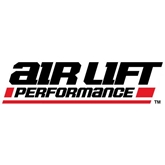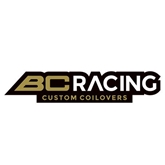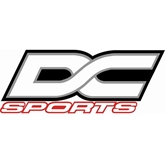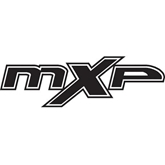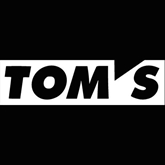Complete front Essex Designed AP Racing Competition Brake Kit for Subaru BRZ / Scion FR-S / Toyota GT86
- Features AP Racing CP8350 four piston calipers
- 299x32mm, 60 vane AP Racing disc
- Saves 20 unsprung lbs. from nose of vs. OEM brakes
- Every component designed to resist the heat of extended track sessions
- Pistons sized properly to allow for seamless integration with OEM master cylinder and ABS system
- Designed to work with OEM rear brakes
WHAT'S IN THE BOX?
- One pair AP Racing CP8350 racing calipers
- One pair 299x32mm AP Racing CP3862, 60 vane, J Hook racing discs, with 6061 hard anodized aluminum hats, and attachment hardware
- One pair caliper mounting brackets and hardware
- One pair Spiegler Stainless Steel Brake Lines with abrasion resistant coating
- Detailed installation instructions
- Brake pads are NOT included with our system. Racing brake pads are a highly personal choice. Many manufacturers include a set of inexpensive, low quality pads with their brake kits. Rather than artificially inflating the price of our system with a set of pads you probably don't want anyway, we've decided to remove the cost from our system and allow our customers to choose the pads that best suit their needs/wants. When purchasing our kit, you are able to choose one set of front pads at a substantial discount vs. the retail price. Please use the drop-down menu to select your pads.
Hard Anodized Finish
The first obvious weakness when looking at a typical aftermarket caliper is the finish. Most aftermarket calipers come in a painted finish, whether they are red, black, or gold. That painted finish is designed to look pretty and prevent corrosion in harsh winter environment. Unfortunately, for all of the compliments painted calipers generate, there is an associated price if you drive the car in a track environment. That price is the chipping, flaking, fading, color shift, and general degradation of that finish in a fairly short period of time. Some OEM calipers can go from the as-delivered color to a nasty shade of brown in as little as one weekend. While this is typically worn as a badge of honor among our more hardcore customers, let’s face it…they still look terrible. More importantly however, all of those bits of paint end up in places they’re not supposed to, which we’ll get to in a minute.
Why does this happen? Heat. Paint and powder coat cannot adequately handle track temperatures. Powder coat also has some notorious issues with shrinkage. The powder coat layer expands and grows when the caliper is heated. When it cools, the powder coat doesn’t necessarily shrink in step with the caliper body itself. What’s left is a loose shell of finish hanging limply on the caliper body. That shell then cracks and falls to pieces.
Paint can also have similar issues depending on how it is applied. If you were to line up a few aftermarket calipers from the same manufacturer, you would likely see that the painted finish on each of those calipers is slightly different. Some have a thicker coat, some thinner, slightly different shades of red, etc. Painting is to some extent an art form, and must be performed in a tightly controlled environment. If it isn’t, you’re always going to see variation. A thick coat makes the part look soft around the edges, and is prone to cracking off in the same manner as the powder coat described above, leaving the underlying finish exposed. A part without enough paint will look uneven, and will not protect the underlying aluminum particularly well either. In addition to problems with cracking, flaking, and uneven application, paint and powder coat also experience extreme color shift when heated. Red becomes maroon or black, gold becomes brown, and black just gets uglier.
The calipers we are using in the Essex Competition Kits are ultra-lightweight, stiff, and durable under all track conditions. The finish is a hard anodizing, which is the business under track conditions. When raw aluminum reacts with the oxygen in the air, a hard surface film develops on aluminum which prevents further degradation. The process is called oxidation, and you can think of it like rust. The anodizing process leverages this natural phenomenon, and takes it a step further to produce an extremely hard protective layer of aluminum oxide. It does so by running an electrical current through an acid bath, and dying it to the desired color. If you want to know more, Google it.
The result is a finish that is far more appropriate for racetrack use. Anodizing creates a uniform surface that is much more abrasion resistant than paint or powder coat. That means if you ding an anodized caliper with a box wrench when bleeding it, a big chunk of the finish isn’t going to chip off into your hand. While anodized calipers will still exhibit color shift, it will take a lot more heat to get them to change, and they won’t change as dramatically. More importantly though, you aren’t going to have bits of anodizing sticking to the sides of your pistons.
20mm Thick Brake Pads in A Commonly Available Shape
Race pads aren’t cheap, and you burn through them quickly if you spend any amount of time on track. The average set of race pads for the AP Racing CP8350 costs roughly $175. How many sets of brake pads do you go through in a season? Some people find that they could pay off their brake system in a short period of time on pad savings alone. Not only are the pads for the CP8350 inexpensive, they’re also 20mm thick. That extra thickness acts as a thermal barrier and helps keep heat out of your pistons and brake fluid. Finally, since this pad shape is used by a wide range of racing calipers, it’s available in just about every popular racing compound on the market (Essex alone sells close to 20!). That means you’ll never end up in a pinch without pads. Cheap, thick, and available is a great combination for a consumable like race pads.
The available pad compounds that Essex offers for the CP8350 caliper can be found below. Please note however, that the pad shape we use in our caliper is available in a variety of radial depths (heights). When combined with the CP3862 299x32mm disc, Essex recommends the D42-D43mm radial depth version. The other common radial depths in this pad shape are 50mm and 39mm. The 39 radial depth will fit into our caliper, but you will be leaving a small unswept 'ring' around the disc near the attachment points to the hat (the pad will not hang as low in the caliper). Leaving a portion of the disc face unswept can create a temperature differential across the face of the disc, and doing so could lead to premature disc cracking. That said, we have not run into such a problem with our kits in the field. The 50mm radial depth version will not work with our 299x32mm disc.
Below each manufacturer listed below, the pad compounds are ranked from most aggressive to least aggressive.
Ferodo Racing
- DSUNO (D42)
- DS3000 (D42)
- DS1.11 (D42)
- DS2500 (D42)
Pad Cross Reference
Again, please keep in mind that there are many other compounds available on the market from other manufacturers. Since we do not offer many of the brands listed below, Essex cannot guarantee the fitment of these pads in the AP Racing CP8350 caliper. Based on our research however, we believe that these are the appropriate cross references for the basic shape. However, you should verify with either the manufacturer or your installer prior to purchasing any of them.
| |
D43 Depth
|
D50 Depth
|
|
Manufacturer
|
Part Number
|
Part Number
|
|
Carbotech
|
CTW7420
|
CTFRP3116
|
|
Circo
|
MB1680
|
MB2660
|
|
Endless
|
RCP106
|
RCP106
|
|
Ferodo
|
FRP3097
|
FRP3116
|
|
Hawk
|
HB521.800
|
NA
|
|
Mintex
|
2205
|
2206
|
|
Pagid
|
2205USA
|
NA
|
|
PFC
|
7751.xx.20
|
NA
|
|
Project Mu
|
999
|
NA
|
|
Raybestos
|
R701
|
NA
|
|
Wilwood
|
7420
|
NA
|




























